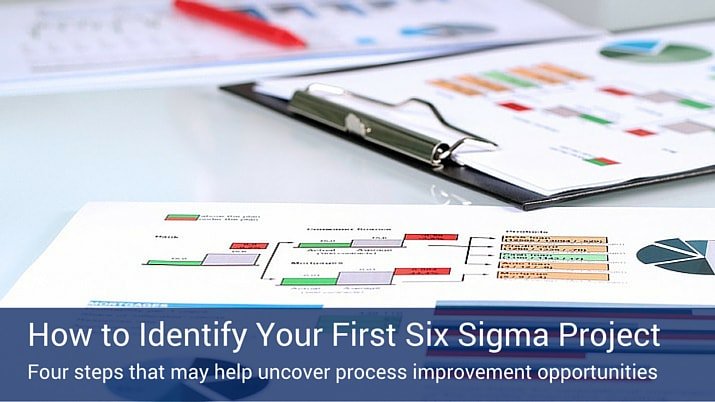How to Identify Your First Six Sigma Project

Last Updated October 19, 2023
Six Sigma is a methodology designed to significantly improve business strategies and workflows. Once a Six Sigma project is underway, it can significantly boost efficiency and goal achievement in an organization.
Without a well-defined strategy, pinpointing a Six Sigma project can be a complex process. Fortunately, there are several steps you can follow to help you along the way.
Step One: Consider Your Organization’s Strategic Planning Process
Most organizations improve processes through certain plans or strategies, and it’s important to understand the methodology that your company uses. Most strategic planning processes include some (or all) of the following:
- A planning period in which milestones and goals are established and agreed upon
- Alignment with the goals and interests of major stakeholders
- Creation of a mission statement
- Creation of a business model
- A performance assessment of the company and its strengths and weaknesses
- A gap analysis study, which shows the distance between where the business is at and where it aspires to be
- Creation of an action plan to cover those gaps
- Development of contingency plans, in case the strategic plan has to change during its execution
- Implementation of the plan throughout the company
Step Two: Align Improvement Activities with Action Plans
Six Sigma is designed to bridge the gaps discovered in the gap analysis study. It can supplement the action plan phase of a strategic planning process, so once the plan is in place, the next step is to figure out how Six Sigma aligns with your organization’s goals, aspirations and plans of action.
If business modeling is a part of your organization’s strategic planning process, it can tell you a great deal about where the business stands in terms of market growth and competitive positioning. Businesses require different improvement plans based on their standing in the market; a company in a fast market with a weak competitive position will typically have need of different action plans than a company who is doing well in a slow-moving market.
Once you’re confident of the organization’s standing within its market, you can combine the action plan to the goals that will most benefit the company. This is called policy deployment. It involves setting goals that are high level and functional, and then integrating those goals into performance plans for individuals and teams within the organization. Once the plans are in place, these individuals will oftentimes require performance reviews to ensure consistent progress and alignment.
Step Three: Understand the Core Business Processes
Just about every business has levels of different processes. At the highest level, a business is about creating products, information or services that are coveted by a consumer base. That can be defined as the core business process. Underneath that, however, are more intricate processes. Processes that require a specific sequence of steps and actions to keep the core business process working efficiently.
It’s that underlying, intricate series of processes where Six Sigma does its most relevant work, but it won’t be optimally effective if an organization doesn’t understand its core business processes first.
Step Four: Identifying a Project
Those who are Champions or Master Black Belts of Six Sigma can adhere to a specific methodology for identifying and selecting a Six Sigma project. You must first understand the strategic plan, align improvement activities with action plans and understand your core and underlying business processes.
After those prerequisites have been satisfied, you’re able to adequately brainstorm improvement opportunities for the organization. The next step is to order these opportunities based on potential risk, reward and alignment to company goals. Take these opportunities to major stakeholders, gain their consensus and start moving forward with your Six Sigma project.





